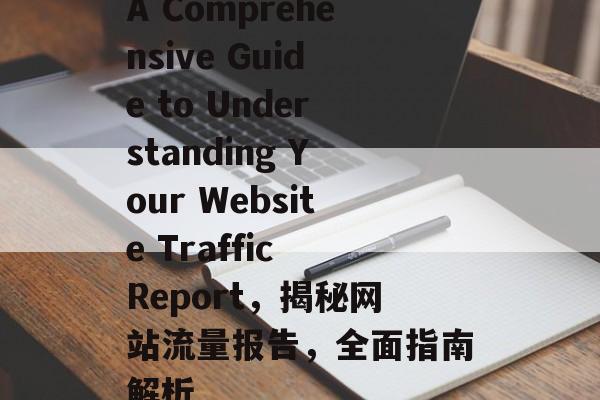A Comprehensive Guide to Understanding Your Website Traffic Report,揭秘网站流量报告,全面指南解析
This guide delves into understanding your website traffic report, covering key metrics like page views, visits, and bounce rate. Learn how to interpret data trends, identify traffic sources, and optimize your site for better engagement and conversions. Get insights into audience demographics and behavior to enhance your online presence.
本文目录导读:
- What is a Website Traffic Report?
- Why is a Website Traffic Report Important?
- Key Metrics in a Website Traffic Report
- How to Interpret Your Website Traffic Report
- Conclusion
In the digital age, understanding the performance of your website is crucial for its success. One of the most vital tools at your disposal is the website traffic report. This document provides a detailed overview of the visitors coming to your site, their behavior, and the overall effectiveness of your online presence. In this article, we'll delve into what a website traffic report is, why it's important, and how to interpret the key metrics.
What is a Website Traffic Report?
A website traffic report is a comprehensive summary of the data collected about the visitors to your website. This data is typically gathered using web analytics tools such as Google Analytics, which track various aspects of user engagement. The report includes information on the number of visitors, their demographics, the pages they visit, how long they stay, and how they found your site.

Why is a Website Traffic Report Important?
- Performance Analysis: It helps you understand how well your website is performing in terms of attracting and retaining visitors.
- Strategic Decision Making: The insights gained from the report can guide your marketing strategies, content creation, and user experience improvements.
- ROI Tracking: By analyzing traffic sources, you can determine which channels are most effective in driving traffic to your site, helping you allocate resources more efficiently.
- Problem Identification: It can highlight issues such as high bounce rates or low engagement, allowing you to address these problems promptly.
Key Metrics in a Website Traffic Report
- Visits: The total number of sessions on your website. A visit is counted when a user comes to your site and engages with it.
- Unique Visitors: The number of individual users who visit your site. This metric helps you understand the reach of your website.
- Pageviews: The total number of pages viewed on your site. This gives you an idea of the content that is most popular with your audience.
- Bounce Rate: The percentage of visitors who leave your site after viewing only one page. A high bounce rate might indicate that your landing pages are not compelling enough.
- Average Session Duration: The average amount of time a visitor spends on your site. This metric can indicate how engaging your content is.
- Traffic Sources: Where your visitors come from, such as search engines, social media, or direct visits.
- Geographical Location: The countries or regions from which your visitors are coming, which can help tailor your content or marketing efforts.
- Device Type: The types of devices (desktop, mobile, tablet) used by your visitors, which is crucial for responsive web design and user experience.
- Referral Traffic: The number of visitors who came to your site through links on other websites.
- Direct Traffic: The number of visitors who typed your website URL directly into their browser.
How to Interpret Your Website Traffic Report
- Set Goals: Before diving into the report, define clear goals for your website. This will help you understand which metrics are most important.
- Compare Metrics: Look at how different metrics are performing over time. Are visits increasing, or is there a decline in engagement?
- Analyze Traffic Sources: Identify which sources are driving the most traffic and focus your efforts on those channels.
- Examine User Behavior: Use heatmaps and session recordings to understand how users interact with your site. This can reveal usability issues or areas of high engagement.
- Segment Data: Break down your data by demographic, behavior, or traffic source to gain deeper insights.
- Take Action: Use the insights from your report to make informed decisions about your website's content, design, and marketing strategies.
Conclusion
A website traffic report is a powerful tool that can provide invaluable insights into the performance of your website. By understanding the key metrics and interpreting the data effectively, you can make informed decisions to improve your online presence, increase engagement, and drive more traffic to your site. Remember, the goal is not just to attract visitors but to create a compelling experience that encourages them to stay, engage, and take action.
标签: 流量解析
相关文章
- 详细阅读
-
微软网站流量消耗分析,揭秘其庞大的数据吞吐量背后的秘密,解码微软,网站流量解析,探秘其巨量数据处理能力详细阅读

微软网站流量分析揭示其庞大的数据吞吐量背后的秘密,通过深入挖掘网站流量数据,揭示了微软如何高效管理海量用户访问,优化网站性能,保障用户体验,报告详细解...
2025-08-06 41 流量解析
-
各网站流量比较图表深度解析,揭秘互联网流量江湖风云,互联网流量江湖风云深度解析,网站流量比较图表揭秘详细阅读

本篇深度解析各网站流量比较图表,揭示互联网流量江湖风云,通过对各大网站流量数据的分析,揭示流量分布、增长趋势及竞争格局,为互联网行业提供有价值的参考。...
2025-07-31 43 流量解析
-
电玩巴士网站流量数据解析,揭秘游戏爱好者聚集地的流量秘密,电玩巴士流量揭秘,解码游戏爱好者聚集地的流量密码详细阅读

电玩巴士网站流量数据解析揭示,该平台成为游戏爱好者聚集地,流量秘密在于丰富游戏资讯、互动社区和深度评测,吸引大量用户关注,成为游戏行业的重要流量入口。...
2025-07-31 47 流量解析
- 详细阅读
- 详细阅读



